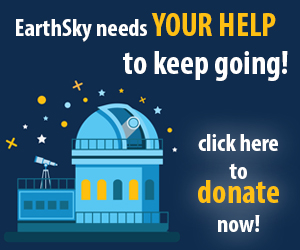Summer meteor showers are here: Top 10 tips for watching
Meteor showers are unpredictable but nothing beats them for a fun and relaxing time under the stars. Here's our 10 tips to maximize your meteor viewing time.
July 26, 2024
Delta Aquariid meteor shower: All you need to know in 2024
The nominal peak of the Delta Aquariid meteor shower is late July. But the shower rambles along steadily for weeks and intermingles with the Perseids.
July 26, 2024
Radiant point of meteor showers: All you need to know
Meteors enter Earth's atmosphere on parallel paths. So, you'll see meteors appear to come from a single point in the sky: the radiant point!
July 26, 2024
Learn how to shoot photos of meteors
Want to try to shoot photos of meteors with your camera? The first step is planning. The next step is to gather your equipment. Then on to the capture process.
July 26, 2024
Visible planets and night sky guide for July and August
Visible planets and night sky guide for July 2024. It’s summer meteor time! Follow these tips to optimize your chances of seeing a great meteor display.
M6 and M7: Open star clusters in the Scorpion’s Tail
M6 and M7 are star clusters near Scorpius’ stinger. But you’ll need a dark sky to see these faint but stunning stellar aggregations.
What are star trails, and how do I photograph them?
Star trails are long-exposure photographs of stars taken as Earth turns, resulting in streaks of light across the sky. Here's how to photograph star trails.
July 14, 2024
Exoplanets are worlds orbiting other stars
Exoplanets are worlds orbiting distant stars. Watch a video with an astronomer who studies them. Learn the history of our knowledge of exoplanets, and more.
July 7, 2024
Earth farthest from sun – or aphelion – on July 5
Earth farthest from sun ... aka aphelion! It happened on July 5. That's despite the fact that it's summer now in the Northern Hemisphere.
July 5, 2024
Jupiter coming to June’s morning sky, opposition in December
Giant Jupiter is closest to Earth for 2024 on December 6. Then Earth will fly between the sun and Jupiter - bringing Jupiter to opposition - on December 7.
July 1, 2024








